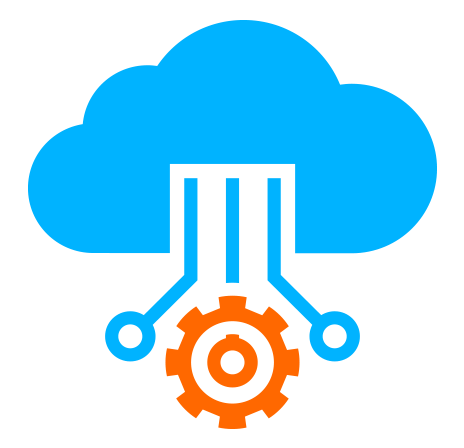 Server
Colocation
Server
Colocation
 CDN
Network
CDN
Network
 Linux Cloud
Hosting
Linux Cloud
Hosting
 VMware Public
Cloud
VMware Public
Cloud
 Multi-Cloud
Hosting
Multi-Cloud
Hosting
 Cloud
Server Hosting
Cloud
Server Hosting
 Kubernetes
Kubernetes
 API Gateway
API Gateway

If you’ve been following business trends in the last decade, you’ve probably noticed one thing: Software-as-a-Service (SaaS) is taking over. From startups to Fortune 500 companies, organizations are increasingly moving away from traditional software installations and adopting cloud-based SaaS solutions. Why? Because SaaS reduces infrastructure costs, scales effortlessly, and integrates smoothly with cloud hosting and server environments.
According to Gartner’s 2024 Cloud Forecast, SaaS revenue is expected to hit $232 billion by 2025, making it the largest segment of the cloud market. Businesses of all sizes are leveraging SaaS to streamline operations, improve collaboration, and enhance customer experiences.
But with so many tools available, which SaaS products stand out as game-changers? In this blog, we’ll explore the top 10 SaaS examples for businesses, explain why they’re popular, and show how they fit into the broader world of cloud computing.
Before jumping into the list, let’s quickly define SaaS.
Software-as-a-Service (SaaS) is a cloud-based software delivery model where applications are hosted on remote servers and made available to users over the internet. Instead of installing programs on local machines, businesses can access SaaS tools through browsers or apps.
Key benefits of SaaS:
Cost-effective: No upfront hardware or server investment.
Scalable: Adjust your plan as your business grows.
Accessible: Works from anywhere with an internet connection.
Secure: Data is often stored safely in cloud hosting environments with enterprise-grade security.
Formerly known as G Suite, Google Workspace includes Gmail, Google Drive, Docs, Sheets, and Meet. It’s an all-in-one collaboration suite hosted in the cloud, making file sharing and team communication seamless.
Ideal for: Remote teams and startups.
Why it stands out: Real-time collaboration with no dependency on local servers.
Slack has become a go-to communication tool for businesses, replacing traditional emails with organized channels, direct messaging, and third-party integrations.
Ideal for: Teams needing fast communication.
Why it stands out: Cloud-based, easy integration with CRMs, project management, and even server monitoring tools.
Salesforce is one of the earliest and most powerful SaaS platforms for managing customer data, sales pipelines, and marketing campaigns.
Ideal for: Sales-driven organizations.
Why it stands out: Extensive customization, AI-powered analytics, and strong cloud hosting reliability.
Zoom surged in popularity during the pandemic, but it continues to dominate the virtual meeting space.
Ideal for: Businesses with remote or hybrid workforces.
Why it stands out: Reliable video performance, scalability across cloud servers, and features like webinars and breakout rooms.
Dropbox provides cloud-based file storage and sharing with strong security features. It has become a staple for businesses looking for lightweight document storage solutions.
Ideal for: File sharing across global teams.
Why it stands out: Reliable cloud hosting architecture that scales with enterprise needs.
HubSpot is a SaaS powerhouse for inbound marketing, CRM, and sales. It simplifies content marketing, lead generation, and customer engagement—all through the cloud.
Ideal for: Marketing teams and SMEs.
Why it stands out: User-friendly interface and serverless automation tools that streamline workflows.
Shopify is a leading SaaS platform that empowers businesses to create and manage online stores. From inventory management to payment processing, it’s all handled through cloud hosting.
Ideal for: E-commerce businesses and retailers.
Why it stands out: No need for heavy server setups—everything is handled on Shopify’s secure cloud infrastructure.
Like Google Workspace, Microsoft 365 offers productivity tools such as Word, Excel, PowerPoint, and Teams—all hosted in the cloud.
Ideal for: Enterprises already familiar with Microsoft tools.
Why it stands out: Deep server-side integrations with enterprise IT systems.
Zendesk provides SaaS-based helpdesk and customer support solutions. Businesses can manage support tickets, live chat, and knowledge bases in a centralized cloud hosting environment.
Ideal for: Customer service teams.
Why it stands out: Quick deployment and strong integration with CRM and server monitoring tools.
Trello uses a card-based system for project and task management. Being entirely cloud-based, it allows teams to collaborate and track progress from anywhere.
Ideal for: Teams managing projects or agile workflows.
Why it stands out: Lightweight, intuitive, and powered by cloud servers with minimal setup.
SaaS adoption isn’t just a passing trend—it’s becoming the backbone of modern business infrastructure. Here’s why companies are rapidly switching:
Cost Savings: SaaS eliminates the need for expensive on-premises servers.
Scalability: Businesses can scale services up or down depending on demand.
Accessibility: Workforces can access data and apps from anywhere, thanks to cloud hosting.
Security: Leading SaaS providers offer enterprise-grade security, often stronger than what businesses could achieve on their own servers.
Continuous Updates: SaaS apps are always up to date, with no manual installations needed.
Not every SaaS product will fit your business needs. Keep these points in mind:
Data Security: Ensure the SaaS provider uses encrypted cloud hosting.
Integration: Check if the tool integrates with your existing servers and applications.
Pricing Model: SaaS is subscription-based—make sure it fits your budget long term.
Scalability: The tool should grow with your business.
Support: Look for strong customer service and 24/7 availability.
From productivity suites like Google Workspace to customer engagement tools like HubSpot, SaaS platforms have transformed how businesses operate. The shift from local server installations to cloud-hosted applications has made businesses more agile, cost-efficient, and collaborative.
As more companies embrace cloud hosting and digital-first models, SaaS adoption will only accelerate. Whether you’re a startup exploring affordable solutions or an enterprise seeking robust scalability, the right SaaS tools can redefine your growth trajectory.
The digital future is here, and it’s powered by SaaS on the cloud.

Let’s talk about the future, and make it happen!
By continuing to use and navigate this website, you are agreeing to the use of cookies.
Find out more


